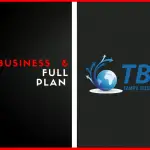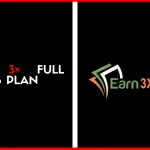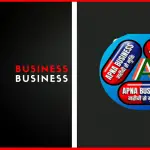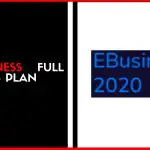Evolution Plan
The Evolution of the Business Plan
This year I’ve had the opportunity to attend a number of great conferences and events in the Startup world. Like a sponge, I’ve been trying to absorb as much information as possible by surrounding myself with experts in the space. One top that continues to come-up in conversation and at conferences is the business plan, and how it is evolving. Business School still tend to focus on traditional business plans while the Startup community in many cases, is going in a much more lean direction. First things first though, why do you need a business plan?
You need a business plan if you are starting a real business. No, the website that you’re making $100/month from doesn’t need a business plan, but the company you want to build with employees, an office, marketing budget, etc. that needs a business plan. Some people think that business plans are only necessary if you’re raising money and while it is an important piece of the funding puzzle, it is more than just a plan to provide investors. A business plan really is validation for yourself that you’ve done the research and really gone from idea to business.
Just in the creation process itself you have to cover a lot of ground and really flesh-out the business behind your “great idea” because we all have great ideas…not all of them are businesses. You need to understand who your competition is, how your business makes its money, how much money you need to run your business, how big the market is, etc. I’ve had a ton of people reach-out to me to partner on a project or idea they have. When I ask them about the available market or who the top competitors are in the space I’m surprised at how many don’t know, the usual response I get is, “but don’t you think it’s a great idea?” Like I said at the beginning of this paragraph, yes – there are lots of great ideas, you probably have ten of them, but not all are businesses.
Now back to the evolution of the business plan. For years now business schools have been teaching students about business plans. They all talk about the same document, a 20 – 35 page document that follows a specific format. It can take a long time to put-together a complete business plan and at the end of the day investors might only read the executive summary. The time spent on this (which could be weeks or more) could be better spent doing customer development, getting to know your competitors, or seeing if you can get your first paying customers.
One of my favorite quotes about business plans comes from Steve Blank, a serial entrepreneur who has gone on to teach entrepreneurship at business schools like Columbia, Berkeley, and Stanford. Steve wrote an incredible book that is one of the most highly regarded in the Startup space called Four Steps to the Epiphany. In his book Steve says, “A business plan is a document investors make your write that they don’t read.”
So how has the business plan evolved? The evolution is a shortening, the creation of a document with all the information investors are looking for, all in one place. One of the best examples I’ve seen of the new business plan model comes from a very cool new product.
Lean Startup Canvas focuses on the core of the business plan – documenting your hypothesis. They have created a one page business model that you can use to organize your business plan into a succinct one-page document that you can show investors and potential partners. The idea is simple here though, in the new Startup model, where getting your minimum viable product out of the door is paramount, a lean business plan makes a lot of sense. You really should be spending every single minute that you can on building your business vs. planning your business.
It’s important to take a step back here and understand what this means. This doesn’t mean that you should slack-off and not plan at all just rushing-into building your business. You still need a plan, however as soon as you make that plan you need to start testing your hypothesis and doing real customer development. Too many entrepreneurs let their ideas die before they had a chance to really understand what customers thought and how they could evolve their model to fit a real need. Just because your hypothesis was true doesn’t mean you had a bad idea, you may just need to change your idea to fit your customer.
We live in a world where turning an idea into a reality has been made more possible than ever before. This is a change, a new model, where customer development is key and you can quickly validate if the customer that you “think” would love to use your product really would. A business plan is still very important, however what form that plan is in has evolved just like the Startup model itself. Don’t be afraid to go lean, still give investors what they are looking for, but spend more time with customers learning about what they want and how you can build a company with more than just a great idea, but a real business behind that idea.
It is important that you read and understand the terms presented here so that you can easily use our compensation plan: FuXion’s
Evolution Plan
1. Direct Sales
As a FuXion independent entrepreneur (EF) you receive a 20% discount on the list price of all qualifying FuXion product purchases. This provides a return on investment (ROI) of 25% when product is sold at retail. For example, if you purchase products valued at a $50 list price, you pay $40 with your discount as an EF. When you sell the product at $50 to a direct or Preferred Customer, you earn $10. Therefore, $10 divided by a $40 (investment) is equal to a 25% return on your investment. Depending on your level of discount (bonus 2: additional discount) you can have 25%, 33%, 38%, or 43% return on your investment. Your Preferred Customers will have a login linked to your account so that when they buy, FuXion will pay you the difference between wholesale and retail on that order.
2. Preferred customer benefits
Enjoy your new custom website, a serious and professional tool with which you can generate more sales and showcase your new business. The site will bring your customers directly to your FuXion store.
Benefits for the Sponsoring EF:
• Retail Profit – Your Preferred Customer pays the retail price when they go to your replicated website, and FuXion pays you the difference between wholesale and retail. Up to 30%!
• Of your top 3 Preferred Customers for the month, you will earn an additional 20% bonus from the purchased points by the lowest of the three. Purchases by the same Preferred Customer are accumulated during the month.(*)
• Purchases made by Preferred Customers count toward your own Cycle Volume.
• You earn X Points for each purchase made by your Preferred Customers. Points can be redeemed for merchandise, passes, tickets for events, etc.
• You have a store for preferred customers through your own replicated web. Benefits for the Preferred Customer
• For every purchase of qualifying products, Preferred Customers also earn X Points, which they can redeem for merchandise, tickets to events and sweepstakes entries.
• Preferred Customers also automatically participate in an annual drawing for exciting prizes on the FuXion anniversary.








